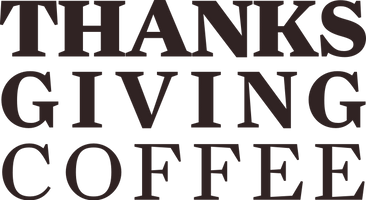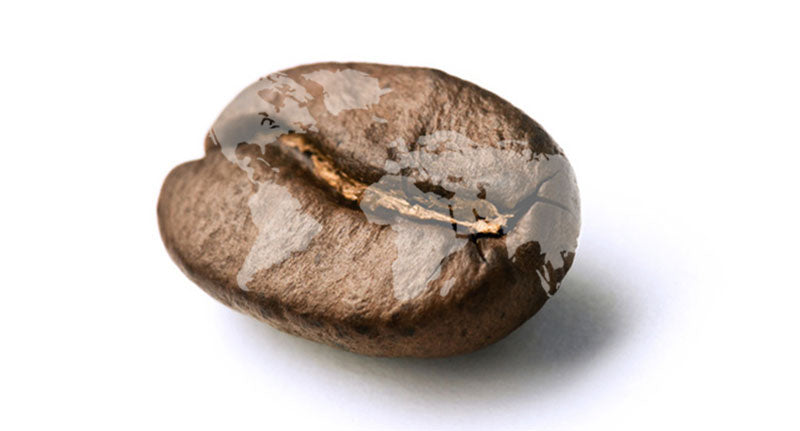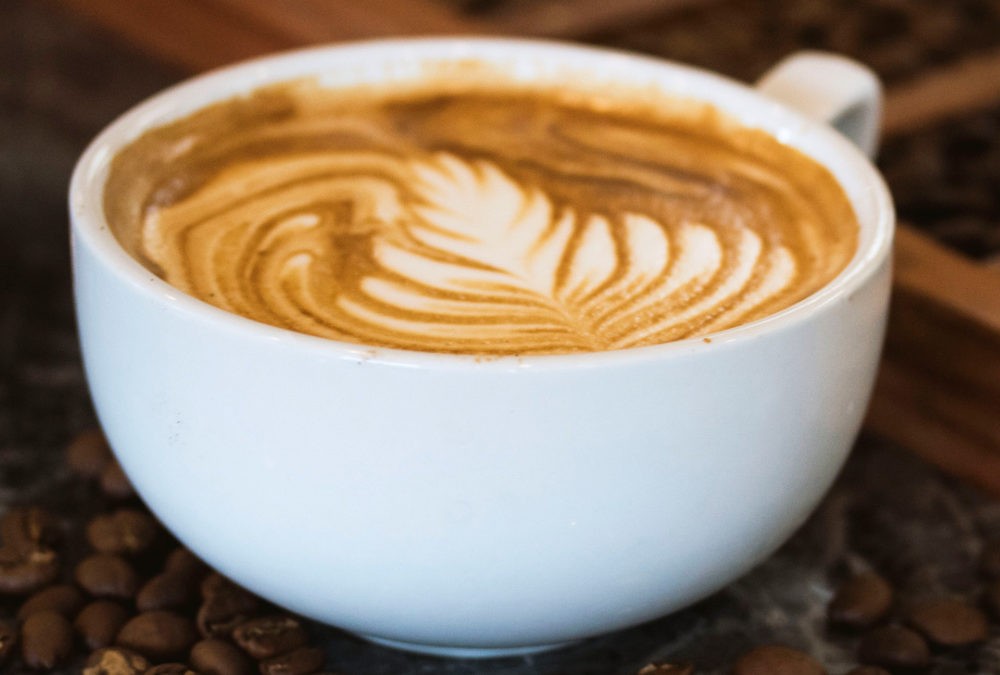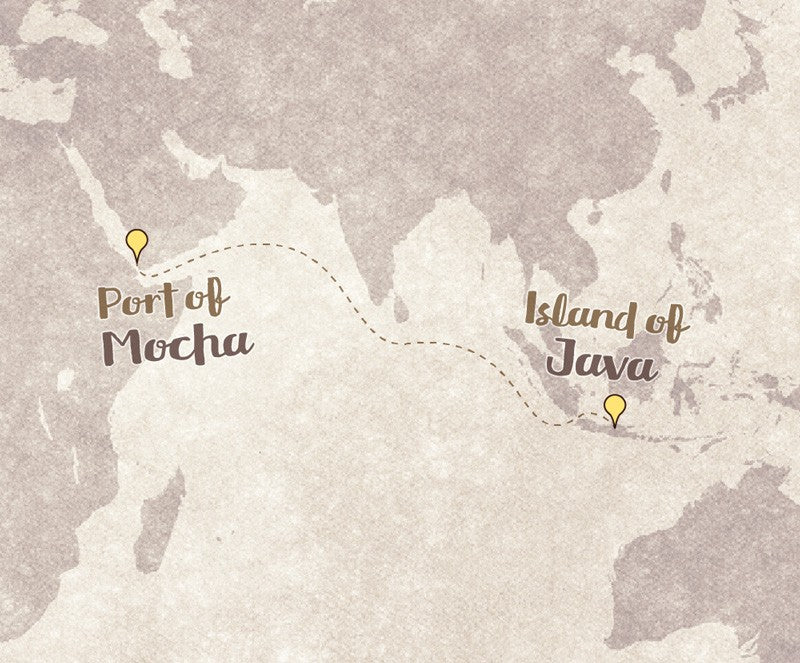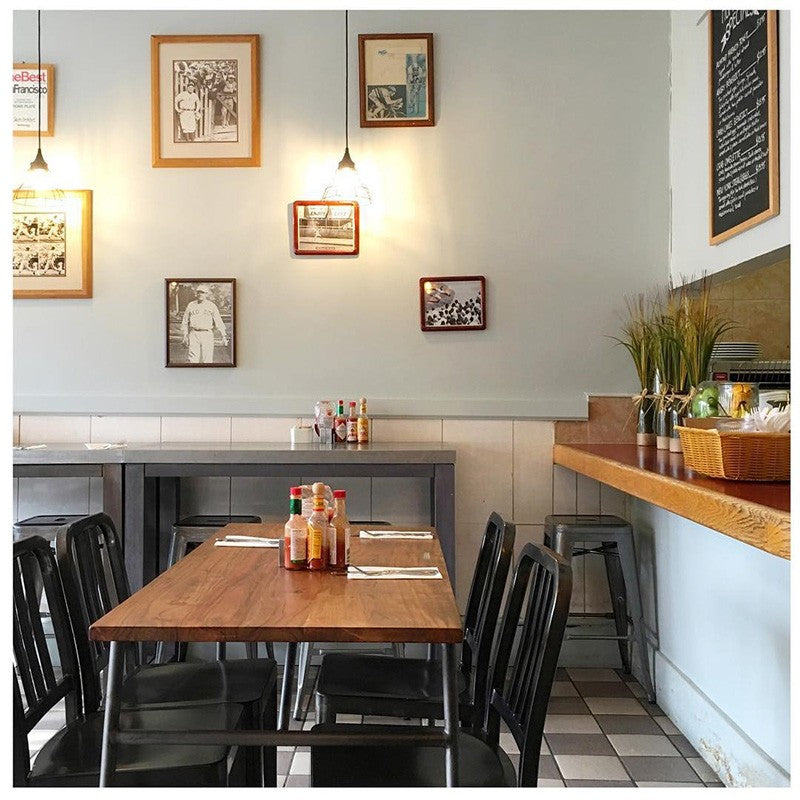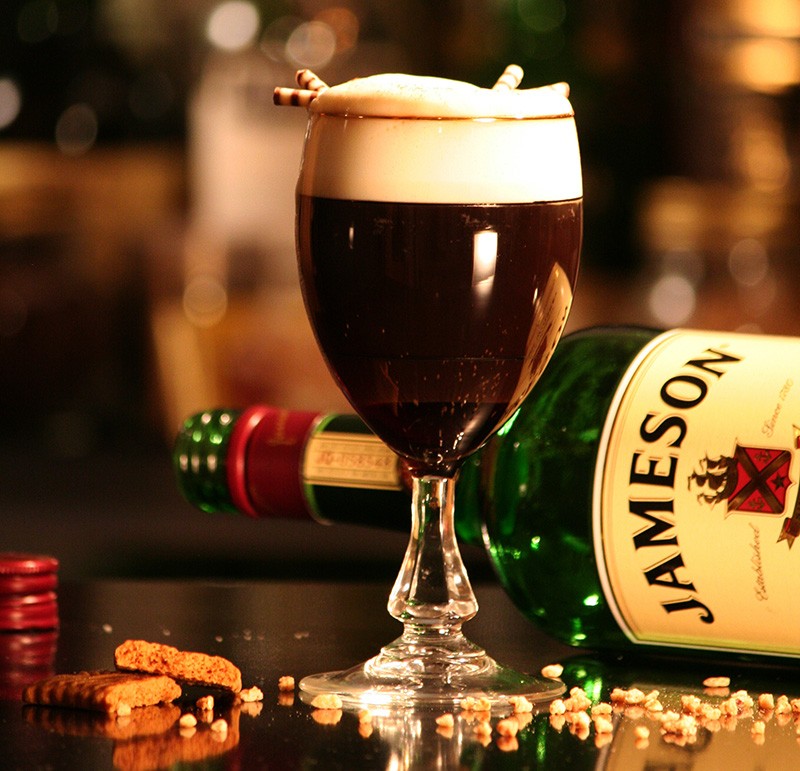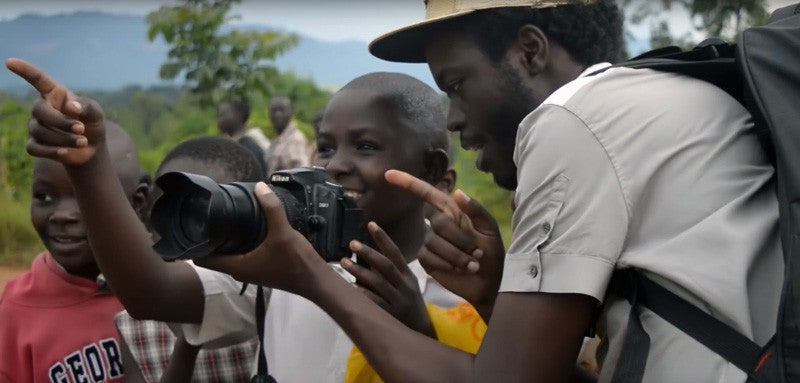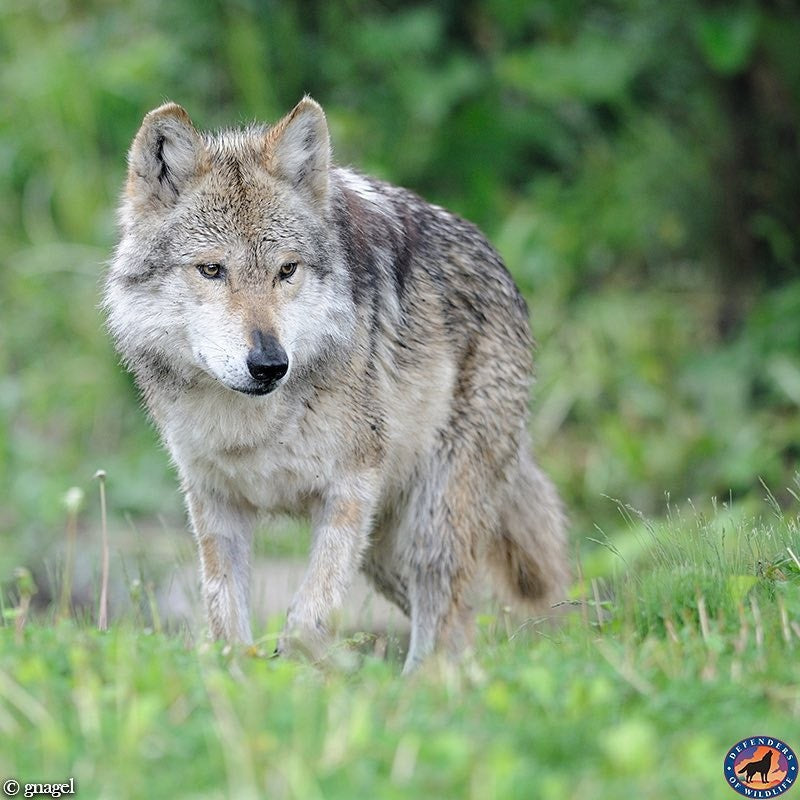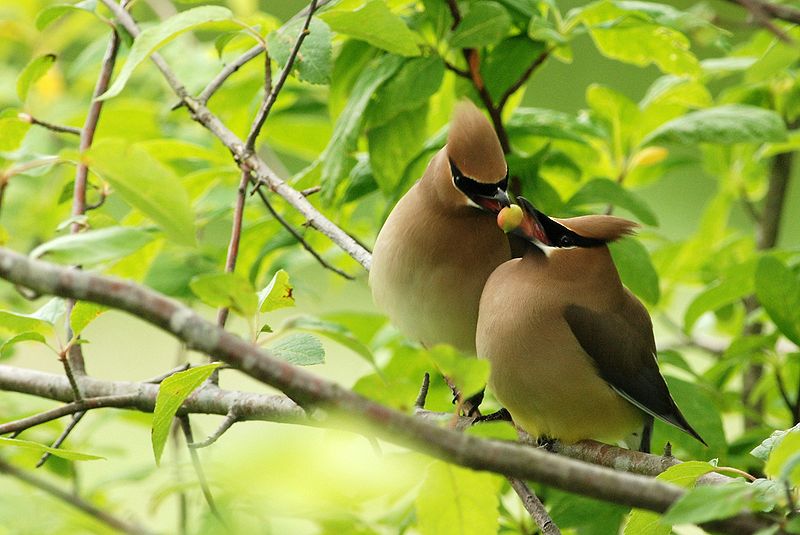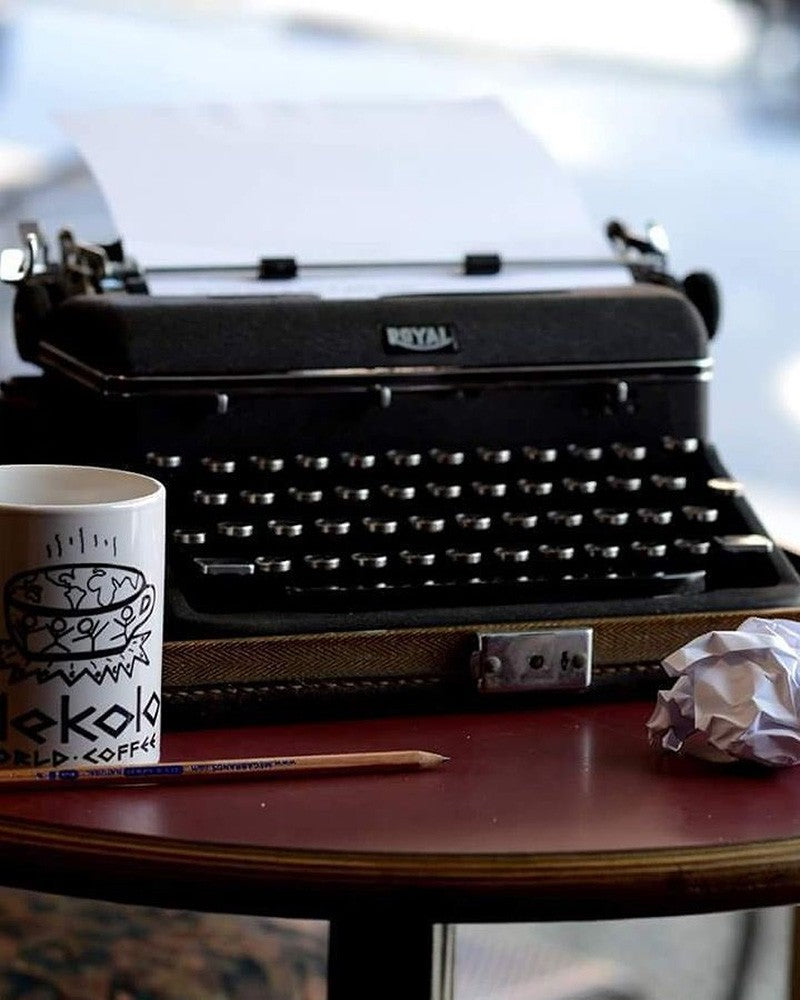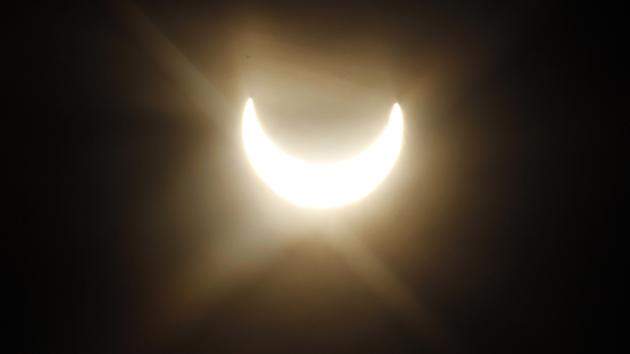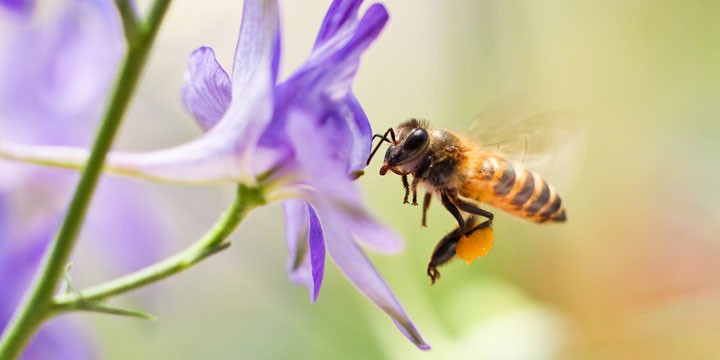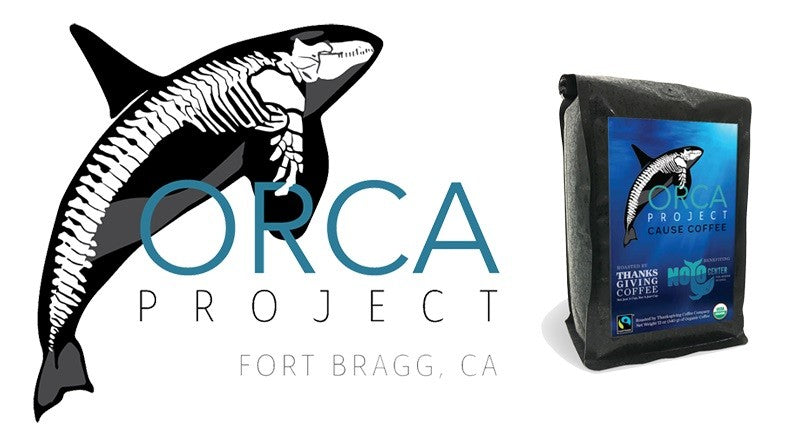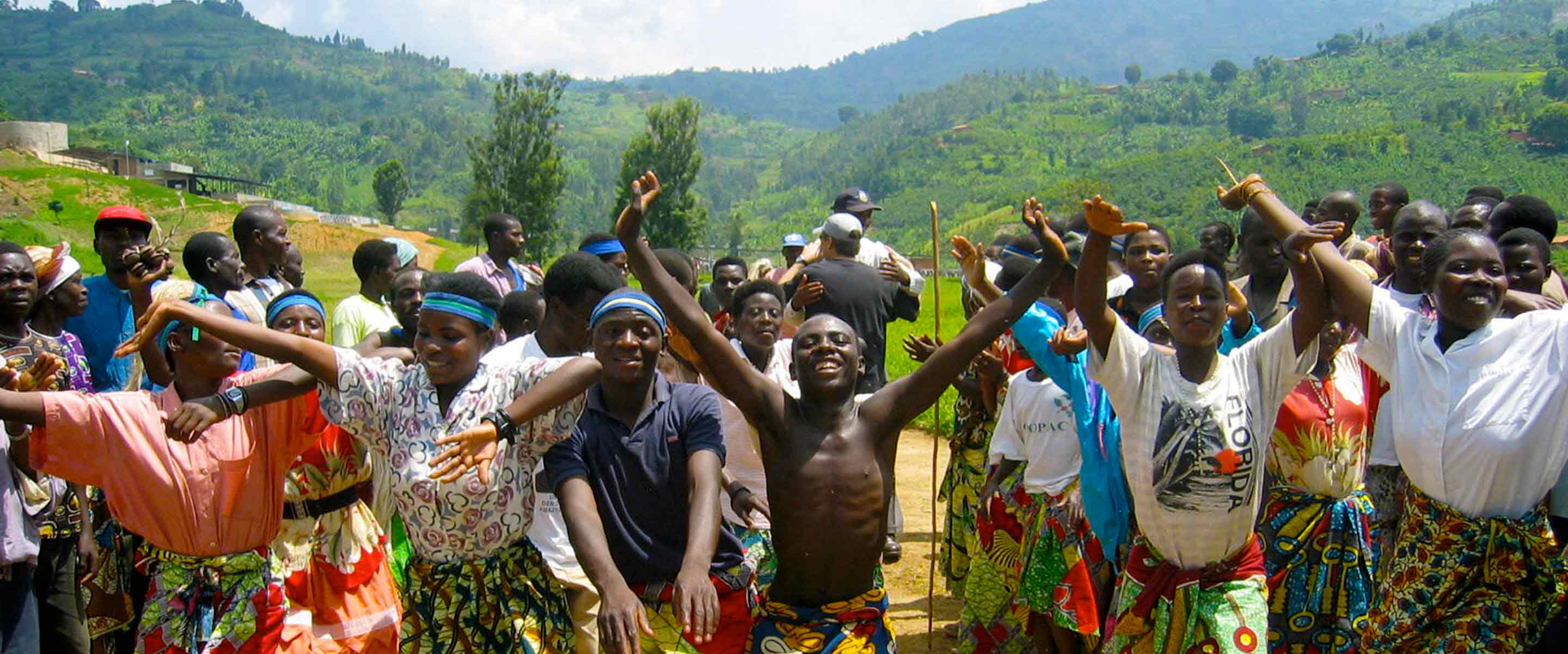
News, Stories and more
Our Blog
View BY :
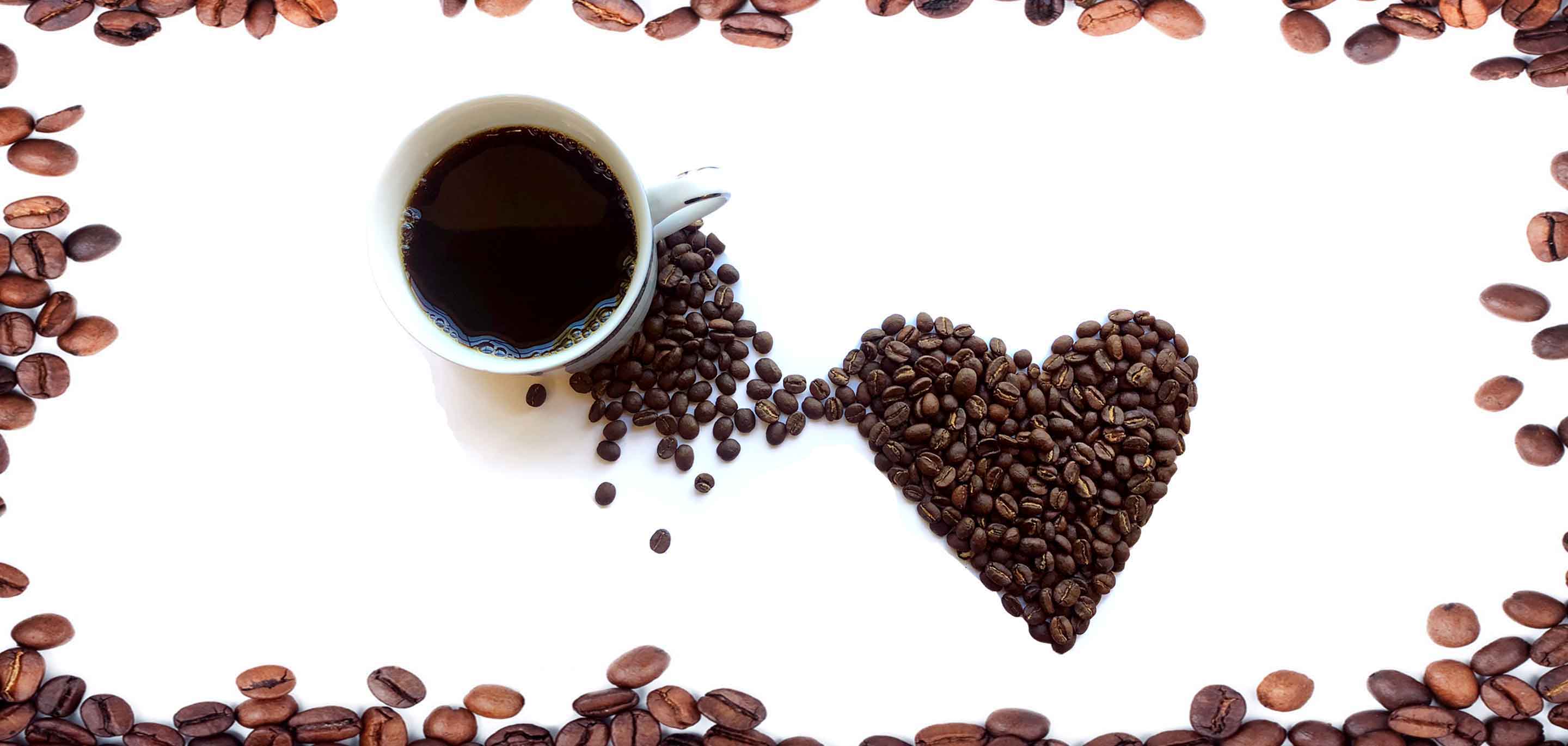
Earning Beans For Coffee Rewards
Thanksgiving Coffee Company Appreciates You We have made it simple and effective for you to get the appreciation we think you deserve. It is the “Earn Beans” reward system. Yay! These rewards will be counted as “beans” which you can redeem as discounts. The more beans you earn the greater the discount, all the way up to free products!
read more-
![Daylight Savings Time]()
Daylight Savings Time
Daylight Savings Time began on Sunday, and we are feeling it. If your office is anything like the Thanksgiving Coffee headquarters, there will be a lot of coffee consumed this week to make up for that lost hour.
Need that extra kick of caffeine? Our Pony Express is called The Jackhammer of Coffees for a reason. Pick up a bag, and get ready to take on your day with a lot more gusto.
Daylight Savings Time
read more -
![World Wildlife Day Coffee]()
World Wildlife Day Coffee
March 3 is World Wildlife Day
This Saturday is the perfect opportunity to spread the word about how wildlife inspires you. It’s also a chance to raise awareness for organizations that are doing the work to protect these creatures. Because of your support, we are able to partner with these groundbreaking non-profits, who are making a difference for wildlife all over the world:

Click the links below to learn more about each of these organizations:
Need some coffee? Head on over to our World Wildlife Day coffee category to order a bag of coffee benefiting one of the organizations above!
World Wildlife Day Coffee
read more -
![Mocha Java]()
Mocha Java
If you’ve ordered our classic Mocha Java in the past few days, you may have spotted a difference in our packaging. Our new label design features a map that illustrates the story behind Mocha Java. In this blog post, we’re going to give you a little history lesson—so pour a cup of java (or grab yourself a mocha?) and have a seat.
While the word “mocha” may also refer to your favorite chocolate-y drink, that is not what we’re referring to in today’s post. Mocha Java is a historic blend of two origins an ocean away from each other: Indonesia and Yemen.

The History of Mocha Java
Back in the 1400s to 1600s, the majority of Europe’s coffee intake came out of the Red Sea, from the Port of Mocha [Makha or Mokha]. This coffee was grown in the country of Yemen, but was referred to by the name of the port from which it came. In the Pacific Islands, it was the same story. Most Indonesian coffee was coming out of a port on the island of Java, controlled by the Dutch East India Trading Company. This led to the term “java”, which has remained as slang for coffee to this day.
These two ports caffeinated most of the coffee-drinking world in those days, and trading ships passed through both on the same trip. Although 5,000 miles separated them, coffee from Java and Yemen lived together on the sailing vessels that made their way across the Indian Ocean and back to Europe. These two origins came together as the very first blend in the world of coffee, and it’s a combination that roasters continue to emulate.
Mocha Java Today
These days, your typical Mocha Java has a few slight variations. Most roasters (and coffee enthusiasts) prefer Indonesian coffee to be sourced from Sumatra, the next island over from Java. On the Middle Eastern side, buyers will often source their “mocha” from the African country of Ethiopia, across the Red Sea from Yemen.
This is the case for our own homage to Mocha Java. For the Thanksgiving Coffee Mocha Java blend, we source our “java” from farmers in the the Takengon region of Sumatra, Indonesia. Our “mocha” is a natural-processed coffee that comes from farmer cooperatives in Yirgacheffe, Ethiopia. Our Mocha Java is a coffee that we’ve perfected over decades of roasting, and we strive to maintain its consistency.
The history of Mocha Java is a history of the coffee world as a whole. The coffee industry has changed significantly over the past five centuries, and we love looking back and researching where it all came from. Next time you brew up a cup of our Mocha Java, take your time drinking it, because you are sipping a truly historic coffee.
Mocha Java, Deconstructed
Now that you know the background of the Mocha Java, you have the opportunity to create your own. Our organic Sumatran Coffee is available in two roast colors, and we have three different organic Ethiopian coffees that you can choose from online. You can mix up the “mocha” and “java” to create your own perfect blend.
Mocha Java
read more -
![Home Plate San Francisco has Moved]()
Home Plate San Francisco has Moved
Just a mile away from San Francisco’s crookedest street is a classic old-school diner on Lombard that has graced the city of San Francisco for over thirty years. Home Plate in San Francisco has long been the breakfast choice of Bay Area locals, and they have now grown into a new location.

Thankfully, they haven’t moved far. This homage to the baseball years of old has shifted their location to a block west on Lombard Street, into a larger space. With the added area, they’re almost doubling their sitting area, and will be able to accommodate many more visitors for breakfast and lunch.
Coffee at Home Plate San Francisco
Thanksgiving Coffee has been Home Plate’s coffee provider since the very beginning, and they’re one of our favorite accounts to visit in the city. The coffee at Home Plate also received an upgrade during the move; a new brewer was just installed, and we had took some time to train their new in-house barista on espresso drinks, as well.
The Bay Area continues to offer some of the best food in the country, and we are so happy to provide coffee for the leading breakfast spots.
Home Plate San Francisco is open now in their new location:
2150 Lombard St
San Francisco, CA 94123
Home Plate San Francisco has Moved
read more -
![Ellen DeGeneres and the Dian Fossey Gorilla Fund International]()
Ellen DeGeneres and the Dian Fossey Gorilla Fund International
The Dian Fossey Gorilla Fund International has been one of Thanksgiving Coffee’s longest partnerships, and we’ve had the pleasure of donating over $40,000, with the help of our customers and wholesale partners.
The DFGFI has been working tirelessly for fifty years to continue the legacy of Dian Fossey, in protecting the magnificent mountain gorillas of Africa. First in Rwanda, and now expanding into the Democratic Republic of Congo, the Dian Fossey Gorilla Fund International has changed the way the world thinks about gorillas, and has preserved and documented five decades of gorillas in the mountains of the Virungas.
Now, they are going to be able to do even more, with the extraordinary donation from Portia De Rossi and Ellen DeGeneres. On January 26, Ellen’s 60th birthday, Portia gave Ellen the gift of furthering Dian Fossey’s legacy and joining the DFGFI by establishing a permanent research center in Rwanda.

You can see the video on YouTube, of Portia surprising Ellen on her show with this spectacular gift.
This is a huge step forward for the Dian Fossey Gorilla Fund International, allowing them to expand their research in this specially-designed facility. President and CEO Tara Stoinski, Ph.D. said this about the gift:
“It’s impossible to overstate what this remarkable news means for the protection of these magnificent animals. We have continued Dian’s legacy for 50 years, and this new campus will serve as a brilliant focal point for our efforts to protect wild gorillas over the next decades.”

We are so excited to be able to watch as this new partnership grows and matures. Portia De Rossi also set up a Wildlife Fund in Ellen’s name: the Ellen DeGeneres Wildlife Fund. This fund will begin by supporting the Karisoke research facility, and will continue to take on projects for other wildlife preservation causes in the future.
Thanksgiving Coffee wants to give a huge thank you to Ellen and Portia for this amazing donation to the future of Rwanda’s mountain gorillas.
About the Dian Fossey Gorilla Fund International
The DFGFI was established in 1967 by Dian Fossey. She set up a research facility in the country of Rwanda, dedicated to the preservation and documentation of the mountain gorillas living in the Virunga wilderness. After her death in 1985, the organization continued her work in monitoring and protecting the mountain gorillas of Rwanda, and later the Grauer’s gorillas of the Democratic Republic of the Congo.
Thanksgiving Coffee and the Dian Fossey Gorilla Fund International partnered in early 2004 to create the Gorilla Fund Cause Coffee, using Fairtrade Rwandan coffee. In 2017, we launched our Grauer’s Gorilla Coffee, using Organic and Fairtrade coffee grown in the Congo. Through the fourteen years we’ve worked with the DFGFI, we’ve raised over $40,000 to support these gorillas.
Ellen DeGeneres and the Dian Fossey Gorilla Fund International
read more -
![Bolivian Coffee]()
Bolivian Coffee
Join us in taking a closer look at Bolivia as a coffee origin.
Bolivian coffee is primarily grown in the Yungas – a band of forests growing along the slopes of the Andes. This is the Caranavi Province, located just northeast of the city of La Paz. It’s a fertile land that is excellent for growing coffee, and ranges from 800-1800 meters above sea level.

For many years, the only way to access the coffee farms of this region was via the Yungas Road – a steep and winding route that led from the city of La Paz into the Andes. This path was the one link between Bolivian coffee farms and the rest of civilization until the early 2000s. It has been called “The World’s Most Dangerous Road” or “Death Road”, and currently attracts mountain bikers looking for a high-elevation thrill. These days, there is a paved, two-lane road that allows for faster and safer traffic to move between La Paz and the coffee villages to the northeast.
The History of Bolivian Coffee
As the poorest country in South America, Bolivia has historically had a number of problems. Transportation of goods over the Yungas Road was a monumental issue for years, and the overworked coffee farmers had no reason to care about the quality of their product, knowing they would be underpaid whether it was good quality or not. Coca farming was a much more lucrative business than coffee.
USAID made huge strides in Bolivia in the early 2000s, by building wet mills in the Yunga forests. Processing at origin made the quality of the coffee increase dramatically, and helped a new generation turn toward coffee instead of coca. The swelling popularity of the Fairtrade and Organic movements also assisted in boosting the Bolivian economy, and improved the caliber of coffee coming from the country.

Thanksgiving Coffee and Bolivia
This year’s crop of coffee from Bolivia landed at the Thanksgiving Coffee headquarters in late January, making it our latest arrival for February 2018. We continue to be impressed with how much Bolivian coffee has improved in the 40+ years that we’ve been sourcing and roasting it.
Co-founder and CEO Paul Katzeff writes about his first time roasting Bolivian coffee in the late seventies:
“It was not memorable. Like most coffees from South America that were not from Brazil, Venezuela or Colombia, it was poorly prepped and inconsistent from sack to sack. It was long before coffee was even called ‘Specialty.’ Coffee farmers in Bolivia were not selling or even thinking about producing better quality. Their market was used as filler for the multi-national brands. My interest back then was only because I was exploring new possibilities, seeking treasure where treasure had not yet been found. Bolivia came into its own as an origin within the last 10-15 years and quality has improved steadily into a well-prepared, sweet and bright flavor profile. Bolivia has come a very long way in a very short period of time.”

Thanks for taking the time to dig into the origin of your coffee – check out our light roast Bolivian coffee below:
Bolivian Coffee Origin Specifics

REGION: La Paz, Caranavi Province
ALTITUDE: 800-1800 meters above sea level
GENETIC VARIETIES: Typica, Catuaí, Caturra
CERTIFICATION: Fair Trade, Organic
PROCESSING METHOD: Washed
DRYING METHOD: sun-dried on patios
Bolivian Coffee
read more -
![Irish Coffee]()
Irish Coffee
In the cold months of the early 1940s, a cocktail we know and love was created in Limerick, Ireland. A local chef combined the cozy warmth of a cup of coffee with the strong kick of Irish whiskey, and the Irish Coffee was born. The Buena Vista Cafe in San Francisco was the first recorded American bar to serve this drink, and these days you can order it in just about any pub you wander into.

By Marler (Own work) [CC BY-SA 3.0], via Wikimedia Commons
January 25 is National Irish Coffee Day, and there’s only one way to celebrate—by making yourself a drink! The Irish Coffee is a simple cocktail, but we did our research to find the classic way to brew and imbibe. There are four main ingredients in just about every recipe researched, so be sure you’re stocked up on these:
- Irish Whiskey
- Brown Sugar
- Hot Coffee
- Heavy Cream
Irish Coffee Recipe
Follow this recipe to celebrate National Irish Coffee Day:
- First off, brew some coffee! You’ll want a strong and dark brew, and the Mendocino Vienna is the perfect addition to any Irish Coffee cocktail. While you’re at it, boil some water to warm up the inside of your cup.
- Next, whip that heavy cream. Mix it so that’s it’s still creamy, not quite stiff, so it can sit smoothly, right on top of your drink.
- Warm up the bottom of your glass with that hot water, and dump it out.
- Toss in a teaspoon to a tablespoon of brown sugar. It’s up to you how much sweetness you want!
- Pour in a jigger of Irish Whiskey, while mixing it with a small spoon. You’ll want to combine the whiskey with the sugar already in the cup.
- Slowly pour in your brewed coffee, while mixing it with the sugar and whiskey mixture already there. Leave some room at the top of your cup for the cream!
- What you’ll want to do with the cream is VERY slowly pour it on top. We’re not doing any mixing here, just setting down a layer of cream to sit right on top of your drink.
- Need a little garnish? A sprinkle of nutmeg, a dash of caramel or even a little extra brown sugar on top make for a fancy looking cup of Irish Coffee.
Looking for a non-alcoholic version of an Irish Coffee? Use a splash of brandy or rum flavoring instead of the whiskey. If you’re worried about an evening drink containing caffeine, we have a solution: decaf! We would suggest our Nighthawks’ Royal, but you can peruse our full list of Decaf Coffees for yourself.
Did you make yourself a cocktail using our coffee? Share a picture and your review on our social media channels! FACEBOOK • TWITTER • INSTAGRAM • TUMBLR
Irish Coffee
read more -
![Organic Sumatra Coffee Beans]()
Organic Sumatra Coffee Beans
We’re featuring two great coffees from the beautiful island of Sumatra! With this particular single origin, you have the unique opportunity to try the same coffee roasted to two colors: a medium roast and a very dark (or French) roast.
Learn a little more about the origin of these Indonesian coffee beans below…
Sumatran Coffee
Our Sumatran coffee was grown by members of the Asosiasi Kopi Gayo Organic Cooperative, also known as ASKOGO. This cooperative currently has 760 members, growing Fairtrade and Organic coffee in the Aceh Tengah and Bener Meriah regencies of Sumatra which are renowned for producing excellent coffee. The small farms are tucked into the dense tropical forests of the Northern Gayo Mountains, from 1000 to 1500 meters above sea level.
ASKOGO offers regular training activities to each of the farmers in their co-op, in order to improve the quality of their coffees, learn new harvest techniques, and implement more beneficial farming practices. This group was founded in 2008, and has continually improved their coffee in the subsequent years. We have been purchasing coffee from ASKOGO since 2015.

Sumatra Coffee Varietals and Origin Specifics
The Sumatran coffee we purchase is of the Typica, Bourbon and Catimor varieties. This coffee is grown in volcanic loam, a common soil for growing coffee, since you find these farms at particularly high elevations. The Takengon Highlands (where we source our Sumatra) have excellent soil, which accounts for such spectacular coffee coming from this region.
The processing method that most of Sumatra uses is “Wet-Hulled.” This process is traditional to Indonesia, and not something you’ll typically find at other origins. While it’s similar to the more common “washed” or “wet processed,” there are a few differences. Perfect Daily Grind does an excellent job of explaining the “Wet-Hulled” process in their 2015 article.

You can purchase a Medium Roast and a French Roast Sumatra here on the Thanksgiving Coffee website. If you’re a member of the Single Origin Club, you’ll be receiving a bag of our medium later this month! If not, shop organic Sumatran coffee through the link below:
Organic Sumatra Coffee Beans
read more -
![The Continuing Songbird Coffee Legacy]()
The Continuing Songbird Coffee Legacy
We don’t want to brag, but Thanksgiving Coffee Company actually has the best customers of all time. Because you purchased Songbird Coffee in 2017, we were able to raise over $9,000 for the American Birding Association. That’s $9,000 last year alone that directly funded birding education and conservation initiatives.
2018 marks fifty years of the American Birding Association providing leadership to recreational birders all over the United States. This group has been a pioneer for decades, and has inspired millions of young birders and conservationists through classes, workshops and conferences all over North America.
For the past 22 years, Thanksgiving Coffee Company has been a proud part of this legacy, educating birders and coffee drinkers about the ecology of coffee farms, and how they play an integral role in the lives of many of the birds we know and love. We took a leading role in preserving bird habitat by introducing Songbird Coffee in 1996, and we have continued to purchase from farms that grow their coffee organically, under the canopy of native forests.
The introduction of the Bird-Friendly Coffee program was another huge step toward uniting the coffee and birding industries. This certification was created by the Smithsonian Migratory Bird Center in 1998 and now represents the very highest standards of ecological sustainability, protecting habitat for migratory birds in coffee growing countries. We are proud to feature that seal on our nine Certified Bird-Friendly coffees in our online store.

We are birders ourselves, and constantly striving to provide coffee that not only tastes magnificent, but provides for the migratory birds that we love to watch every season.
Read more about Bird-Friendly Coffee from the Smithsonian Migratory Bird Center, or shop for Bird-Friendly Coffee here on the Thanksgiving Coffee website.
The Continuing Songbird Coffee Legacy
read more -
![2017: A Year in Review]()
2017: A Year in Review
Does anybody else feel like this year just began? 2017 has certainly been an inspiring year, and we have had so much fun looking over the calendar from the past twelve months to see what we’ve accomplished, what we’ve learned, and what’s coming up next in 2018.
To all of our friends and family who have been with us this year, THANK YOU! We adore you, and we can’t wait for another great year with you all.
We know this is a long blog post, so we made it easy to skip to different sections:
• 2017 Roaster of the Year • Congo Coffee • Wild Grounds • Favorite Coffees • Package Rebranding • Global Coffee Expo • Cold Brew at Coffeefest • Customer Reviews • CoffeeReview.com • Limited Edition Coffees • Local Partners • Puerto Rico Coffee Donation • New Wholesale Accounts • Thanksgiving Coffee Team •
2017 Roaster of the Year
For the past twelve months, we’ve been celebrating our win of the 2017 Macro Roaster of the Year title from Roast Magazine. After 45 years of both leading and learning from the coffee industry, it was an honor to be recognized as the top roaster in the country.

The judging for this award looks not only at the taste and quality of the coffee, but also at the practices within the company and their history as a whole.
Launch of the Congo Coffee
This is launch is very special to us, because we have such a long history with the Dian Fossey Gorilla Fund International. Since 2004, we have roasted Gorilla Fund Coffee, benefiting mountain gorilla protection and research in Rwanda. As the DFGFI has grown and increased what they’re doing in Africa, we have been building alongside them, with our second Cause Coffee benefiting their efforts.

Partnership with the American Wild Horse Campaign
This June, we had the chance to launch an all-new Cause Coffee with an organization that is doing important work in our country. The American Wild Horse Campaign is dedicated to preserving our free-roaming wild horses and burros as part of our national heritage.
We first met the people behind the AWHC at GreenFest in San Francisco. They tried our coffees, we discussed the needs of their organization, and decided to partner together to create Wild Grounds Coffee.

Thanksgiving Coffee Company has been teaming up with nonprofits for more than twenty years, and has been able to stand with some truly amazing organizations. We are so excited about what the American Wild Horse Campaign is doing, and we are glad to be a part of it.
Your Favorite Coffees
At the end of each year, we take a look back to see what the top sellers were on our website, and it’s always fun to see what coffees our customers have chosen. For 2017, these ten coffees topped the list: four french roasts, three dark roasts, one medium, one light and one flavored coffee.
Did your personal favorite make it to the top?
- Noyo Harbor French – Distinctly smoky with hints of jammy fruit, roasted nuts, and baker’s chocolate. This is our signature Fairtrade and Organic French roast.
- Grey Whale Blend – We blend our Mocha Java with a mellow, earthy Sumatra, and then add just a touch of vanilla.
- French Roast – Full bodied and toasty with intense dark chocolate notes and a smoky finish. This is our darkest roast – and we’ve been making it for over forty years.
- Paul’s Blend – Co-founder and Roastmaster Emeritus Paul Katzeff created this blend to showcase his favorite coffees. Blueberry notes add to hints of cashew and chocolate.
- Nighthawks’ Decaf Very Dark Roast – Bold and rich with intense notes of dark chocolate and toasted marshmallows. Our Decaf coffees are water-processed without chemicals. A classic French Roast.
- Mendocino Vienna – A bold, sweet blend with hints of nuts, chocolate, and caramel. Featuring coffees from Central America, South America, and Indonesia. The secret to Irish Coffee!
- Albion River Inn Blend – A full-bodied and well-rounded blend with sweet chocolate tones and a crisp, toasty flavor.
- Kona Blend – Simply elegant, with notes of tropical flowers and milk chocolate. A perennial favorite among light roast coffee drinkers.
- Sumatra Very Dark Roast – Full-bodied, smoky, earthy.
- Beaujolais Blend – Heavy bodied, complex and rich with a French Roast character, hints of caramel, nuts and spice.
Package Rebranding
When we took home the title Roaster of the Year, we decided to incorporate it into our packaging. The new design, which we launched in early 2017, incorporates the elements that make us who we are. Take a look at all the pieces that went into the new bag design through the link below.

Global Coffee Expo
In April of 2017, seven of the Thanksgiving Coffee team traveled to Seattle for the Global Coffee Expo, put on by the Specialty Coffee Association. We had the chance to see old friends, meet with coffee producers, participate in industry discussions, and taste a lot of great coffee.

Check out our recap of this event through the link below.
Cold Brew at Coffeefest Portland
In October, Lawrence and Jacob attended Coffeefest in Portland, and entered the West Coast Cold Brew Competition. While we didn’t take first place this time around, we did make it to the top four, and had a great time hanging out with other roasters on the cold brew circuit.

In addition to our cold brew coffee making waves in Portland, we are working toward a Nitro Cold Brew product that will be available for wholesale accounts in the New Year. We will have more information as the summer months begin to creep closer.
Coffee Reviews
We never get tired of hearing what our customers have to say! Here are a few highlights from product reviews over the past year.
Anonymous in Moraga, California • Grey Whale Blend
I’ve been drinking Grey Whale coffee for over 10 years now. It’s my all time favorite! It doesn’t seem to have much of the bitterness I taste in many other coffees and the very subtle vanilla flavor adds to the smoothness, but doesn’t overwhelm. I only drink this coffee black because the flavor is that good!
Coffeeholic Birder in Port Clinton, Ohio • Songbird Colombian
I was told that bird friendly coffee was THE way to go for bird conservationists. I had no clue that I was going to have THE very best cup of coffee I ever had. It was. I highly recommend the ABA’s coffee. Save Wood Thrushes, drink this coffee!!
Liz in Washington, D.C. • Nicaragua Light Roast
I have been drinking coffee since high school but always with milk and sometimes even with cocoa powder as I couldn’t stand the bitterness – that is, until this coffee arrived at my doorstep. It is light, fruity, and for the first time ever, I am drinking black coffee and enjoying every moment of it. Thank you Thanksgiving and SOPPEXCCA for helping me find the right coffee for me!
Mayumi in San Marino, California • Wild Grounds Light Roast
We got the coffee mainly for the wild horse cause, but the aroma and the taste of the coffee exceeded our expectations. The light roast is very well done with an enticing smell and a hint of chocolate – pleasantly light but not at all under-roasted. We have had some disappointment lately with the lightly roasted coffee beans lacking aroma ordered from other specialty coffee roasting companies. Your coffee truly shines among the sea of so many coffee beans on the market. We look forward to ordering it again very soon.
James in Des Moines, Iowa • Nighthawks’ Decaf – Very Dark Roast
Excellent flavor. Your coffee is the best. Good taste and fresh.
Jerry in Oakland, California • Paul’s Blend
Retirement years have become even more enjoyable since I was introduced to Paul’s Blend. My awareness of Thanksgiving Coffee started with weekend in Mendocino a few years ago. Every year we return to Mendocino and Thanksgiving Coffee. Now, thanks to online ordering, everyday I can sit down with a cup of Paul’s Blend and the SF Chronicle ipad edition and feel like I’m back in Mendocino.
You can see more reviews from satisfied customers in the review section of each individual product page. Visit the Thanksgiving Coffee webstore to read them, or leave your own review.
Songbird Nicaraguan Coffee Review
In addition to all the kind words from our customers, we also got this VERY special review from CoffeeReview.com. Run by Ken Davids, this website is by far the best review portal for specialty coffee, and the team there was very impressed with our Songbird Nicaraguan.
Check out the excerpts below, or read the full article, and the full review on CoffeeReview.com.
The New Nicaragua, from CoffeeReview.com
“Perhaps the only coffee presenting a classic Nicaragua profile among all of the nine highest scorers is Thanksgiving Coffee’s Organic Shade-Grown Nicaragua (92), a blend of the respected Maracaturra, Caturra and Catuai varieties meticulously processed by the traditional wet method. It is also the only coffee we review that is certified Bird-Friendly by the Smithsonian Institution, hands-down the most uncompromising and rigorous of environmentally focused certifications. The idealism and passion that drove the growing and farm management that produced this coffee clearly went into its processing as well: It is an impressively pure coffee. Of all nine coffees we reviewed this month, it most clearly represents the classic Nicaragua cup of tradition, with its inherent balance, quietly juicy acidity and buoyant, satiny mouthfeel.”
A Review of Songbird Nicaragua, from CoffeeReview.com
“Balanced, crisply sweet-tart. Lemongrass, cardamom, cocoa powder, rhododendron-like flowers, fresh-cut cedar in aroma and cup. The structure fuses sweet, tart and savory tendencies, enlivened by a quietly juicy acidity. Buoyant, satiny mouthfeel. The crisp finish is richly sweet, with notes of lemongrass and vanilla-like florals carrying into the long.”
Limited Edition Coffees
Over just the past six months, we launched two separate limited edition coffees on the Thanksgiving Coffee webstore. The first was from Nepal in July, and the second was our Kenya Red Cherry Project in November. Both of these coffees were very well received, and we hope to bring you even more limited edition coffees in 2018.

Local Partners
In 2017, we had the opportunity to partner with three new local causes, to create an extra stream of income for their organizations: Art Explorers, Family Medicine of Mendocino County, and the Noyo Center for Marine Science. Each of these nonprofits are doing very important things for the Mendocino Coast, and we are honored to be able to stand with them. Follow the links above to learn more about each individual cause.

This fall, we had a surplus of apples in the company orchard, and we were able to harvest and donate over 2500 pounds of apples to the Fort Bragg Food Bank. Our orchard features 25 heirloom varieties, and we were very happy to be able to donate so much to our friends and families in the community who need it.

Puerto Rico Coffee Send with the Hogwarts Running Club
At the very end of this year, we teamed up with the Hogwarts Running Club for a really great project. This partnership was thanks to two individuals on our team who are members of the club: Megan Smithyman and Marchelo Bresciani. Through the amazing give back of this group, we donated over 1,000 packages of coffee to relief workers in Puerto Rico, and the club sent another 4,000 more packages through other coffee roasters across the country.

New Serving and Retail Accounts
We opened numerous accounts in 2017: restaurants, hotels, office accounts and cafes! Take a look at a few of the new ones to come on board this year.
Here in Northern California, we added some spectacular restaurants to our roster. Cafe Beaujolais, Relish Grill, Lizbby’s Restaurant and Bar and Mayan Fusion were just a few of the great additions here in Mendocino County.
As for grocery stores, Thanksgiving Coffee is now available in twenty new Safeways from Redding to Sonoma in California. Look forward to even more in the new year. We can also be found at Dahlia & Sage in Cloverdale, a great new grocery store featuring a lot of local Northern California brands.
For hotels and bed and breakfasts along our coast, we are excited about two fabulous new additions: Heritage House Resort in Little River, and Noyo Harbor Inn right across the Noyo River from us in Fort Bragg. The Noyo Harbor Inn is going to be opening in the next couple weeks, and the Heritage House has long been a staple of the Mendocino Coast.
The addition of Noyo Harbor Inn and the Heritage House Resort brought us to complete our Magnificent Nine–the nine best restaurants on the Mendocino Coast all feature their local Mendocino Coast roaster, Thanksgiving Coffee Company. These restaurants are: St. Orres in Gualala, Albion River Inn Restaurant in Albion, 5200 Restaurant and Wild Fish in Little River, the MacCallum House Restaurant and Cafe Beaujolais in Mendocino, Noyo Harbor Inn and Cucina Verona in Fort Bragg and Newport Ranch in Westport.
Breakers Inn is currently working toward providing Thanksgiving Coffee in each of its 28 rooms on the Gualala coastline. We are coordinating with them and a few other hotels along our coast to provide a revolutionary new in-room brewer. This product will be available to all of our accounts in the coming months!
Five new Wild Birds Unlimited stores across the United States have begun selling packages of Thanksgiving Coffee. Missouri, New York, South Carolina and Illinois were added to our list of WBU stores carrying our Songbird Coffee lineup.
As always, you can view the Thanksgiving Coffee Store Locator page to see where you can pick up a bag or a cup of Thanksgiving Coffee near you. Interested in carrying Thanksgiving Coffee? Reach out through our contact page!
Changes to the Thanksgiving Coffee Team
Thanksgiving Coffee is always growing and changing, and 2017 featured some big updates. Longtime employees David Woolis (28 years), Bill Adams (24 years) and Susan Coy (10 years) retired in 2017, and we of course, miss them very much. Our fearless leaders Paul and Joan Katzeff continue to move us forward into the New Year, alongside Vice President, Jonah Katzeff.
It has been quite a year. Join us in raising a cup of coffee to the last twelve months, and look forward to the next! 2018, we’re ready for you.

2017: A Year in Review
read more -
![A Letter from Elijah]()
A Letter from Elijah
Hello, my friends!
My name is John Elijah, and I am excited to introduce myself and my project to the Thanksgiving Coffee community. I have dreamt of creating a video production company here in Uganda for the past several years, and Paul Katzeff is helping me bring that dream to life. I have known Paul for over three years now, and with his blessing, I would like to introduce my story to you.
Over the past several weeks, I have held three different video shoots, and have put in over a hundred hours worth of editing. I believe that my country has something truly spectacular to offer to the world, but I need your help in making this a reality.
This coming Tuesday, look for an email and video with the details of my campaign, and how you can help build a thriving industry in Uganda!
When you receive this email in your inbox, I ask that you share it with your family and friends. Forward it onto your relatives, share the campaign on your social media pages, and help us create something remarkable.
This is our Uganda.
John Elijah

A Letter from Elijah
read more -
![Meet Elijah]()
Meet Elijah
As we express gratitude for our families and friends during this season, you are at the top of my list. Thanksgiving Coffee’s supporters are some of the most forward-thinking and philanthropic people I have ever met, with great ideas and great heart. It’s an attitude that invigorates all of us here, and inspires us to grow and to give.
In the spirit of this season, I want to share a story and an opportunity with you. Back in 2015, I traveled to Africa to visit a coffee farm in Uganda. On my way off the mountain, riding in the back of an old Toyota pickup, my driver and I passed a party in progress. It was spilling out onto the dirt patio alongside the road. We slowed down to listen to the drummers banging out some rhythms that made you want to get up and dance. In the crowd was a young man with an old and bulky video camera, recording the chaos. He saw the pickup and rushed over to offer me a DVD he had filmed and edited. His name was Elijah.
This started a three year relationship between me and Elijah, via email from 10,000 miles across the globe. I’ve referred this young man to other business owners needing footage in Uganda, and have watched his skills grow and improve as he continues to work in his passion.
We have an opportunity here to showcase what Uganda can offer to the world at large, and support a young man who has the skills and is ready and willing to work.
I believe in Elijah, and I am excited to introduce him to my friends and family and supporters of Thanksgiving Coffee. In the spirit of giving this year, I am asking you to invest in the future of Uganda, by giving the gift of a charitable donation. Follow this link to back the campaign!
Paul Katzeff

Meet Elijah
read more -
![Wolf Awareness Week]()
Wolf Awareness Week
October 15 – October 21
This week, it’s all about the wolves. These magnificent creatures play an integral part in North America’s ecosystem, and Thanksgiving Coffee has partnered with Defenders of Wildlife to protect their legacy. During Wolf Awareness Week, we’re taking a moment to highlight wolves, and the part that each of us can play in protecting these animals for future generations. Spread the word about Wolf Awareness Week, and visit www.defenders.org to make a donation now!
Scroll down to learn more about how Thanksgiving Coffee is involved in protecting our wolves.

What do you know about our wolves? Take a look at the fact sheet below to learn more, and click the image to be directed to the Defenders of Wildlife Gray Wolf Basic Facts page.

Defenders of Wildlife + Thanksgiving Coffee
Thanksgiving Coffee is partnered with Defenders of Wildlife to save our wolves. We do this through our Cause Coffee program, donating 10% of every sale of our Save Our Wolves Coffee back to DOW. If you sign up as a Defenders of Wildlife member and purchase this coffee through the Shop Defenders page, you can give back even more! For every purchase made through their link, 25% of the proceeds will be donated.
Puerto Rico’s road to recovery will be a long and arduous one, but perhaps it will be a bit more bearable with a cup of coffee in hand.

Learn more about roast colors, to choose the right roast for you!
Wolf Awareness Week
read more -
![Featherbed Railroad wins TripAdvisor Certificate of Excellence!]()
Featherbed Railroad wins TripAdvisor Certificate of Excellence!
We want to offer congratulations to our friends at Featherbed Railroad Bed and Breakfast. This unique place to stay in Northern California is a truly magical experience every time… and Tripadvisor has confirmed it by awarding them the 2017 Certificate of Excellence.
This award verifies what we already knew about this great bed and breakfast: they are spectacular. The certificate is awarded only to hotels, businesses and attractions that have held their 4-5 star ranking for a significant period of time. Other items are taken into consideration, like how often the business is reviewed, and the quality of reviews they receive.
Tripadvisor states that “This recognition helps travelers identify and book properties that regularly deliver great service. TripAdvisor is proud to play this integral role in helping travelers feel more confident in their booking decisions.” Only 10% of hotels worldwide receive this recognition!
Thanksgiving Coffee and Featherbed Railroad
Featherbed Railroad has served Thanksgiving Coffee for the past nine years, and we are honored to be affiliated with such a spectacular bed and breakfast. Lake County is lucky to have such a great place for guests to enjoy on the shore of Clear Lake. The shot below is from a visitor on Yelp, sipping Thanksgiving Coffee and enjoying a great view from their caboose.

Check out what people have had to say on Tripadvisor:
“The 9-10 am breakfast was too late for us so our hosts cooked a special breakfast for us at 8. Delicious and piping hot! Great coffee and juice too. The sweet attentive resident dog added to the homey atmosphere and we were sent on our way with a wonderful memory.” “My husband and I stayed at Featherbed for 4 nights earlier this month, and enjoyed every minute of it. The owners, June and Paul, are phenomenal hosts. They’ve taken care of often-overlooked details in the room like large, soft towels, high-quality bedding, locally sourced and delicious coffee.” “I am a local, but stayed over for the New Year’s Holiday! What fun. I had the Tropicaboose and the bed and decor was fab! Breakfast with homemade sausage gravy, fruit, egg casserole and coffee (to die for!) was terrific.”
Photos from Lake County’s Featherbed Railroad
This bed and breakfast features individual caboose rooms for rent! Each individual train car has its own special theme, and each one is individual Take a look through some of their photos to see why it was called One of the most Unusual Hotels in the World by Escape Travel and one of the Ten Wackiest Hotels in the world by Hotels.com.


Check out their website and stay the night: www.featherbedrailroad.com
Featherbed Railroad
2870 Lakeshore Blvd
Nice, CA 95464
(707) 274-8378
Featherbed Railroad wins TripAdvisor Certificate of Excellence!
read more -
![Sing a Song of Bird Notes]()
Sing a Song of Bird Notes
Song Bird Coffee supports the arts
Do you have a favorite bird? Is it the bold blue jay, or the striking red cardinal? Perhaps it’s the mischievous raven, or the sweet singing sparrow? Maybe you don’t know what it’s called, or even what it looks like, but you know its song as it fills your ears with a familiar refrain. Birds connect us to nature, regardless of where we live; from city dwelling pigeons to dramatic California Condors, birds are an ever-present aspect of our lives, but their numbers are dwindling. You don’t have to be an avid birder to enjoy their presence, but if we fail to appreciate them in our everyday lives, then we risk taking them for granted and losing them forever.
Fostering a love of the natural world can take years, especially now when more of us live in cities than ever before. Programs like BirdNote cultivate a love of nature with a wide audience, helping to bring the outside into our homes and deliver the delights of nature in small, auditory morsels.
The BirdNote radio program has been engaging listeners of all ages for over ten years, sharing daily two-minute stories about birds and the environment with audiences all across the country. These uplifting little vignettes are just the right length for everyone to enjoy, and the perfect remedy to ‘news fatigue’.
BirdNote and Song Bird Coffee
Song Bird Coffee has been partnered with the American Birding Association for 20 years and together we have raised over $150,000 in support of the ABA and Partners in Flight, which funds ornithological studies of migratory birds in Central America. Together, we are making a difference by promoting citizen science, ecotourism, and sustainable Bird Friendly farming practices, and now we are proud to be reaching new audiences by sponsoring BirdNote.
By working together, Song Bird Coffee, the American Birding Association, and BirdNote are committed to making the world a better place, for us and for the birds.
Give BirdNote a listen here.
Learn more about the American Birding Association and Partners in Flight.
Sing a Song of Bird Notes
read more -
![Best for the World, Best for Community]()
Best for the World, Best for Community
It’s that time of year again, when the Best for the World honorees are published. These are the B Corporations around the world that score in the top 10% of B Lab certification. Thanksgiving Coffee was honored to make this list for the second year in a row in the Best for Community category.
Take a peek at the full list by clicking the image below.

This year 846 companies were recognized on the Best for the World list in 52 different industries from 30 different countries. Being a part of this community and being recognized in the top 10% is a really wonderful validation of the work we do with our partnership with organization like Friends of the Earth and the Dian Fossey Gorilla Fund International.
Take a look at where some of the other Best for the World companies are located all over the globe:

Best for the World in Mendocino County
Thanksgiving Coffee is just one of nine B Corporations located here in Mendocino County. We’re joined by Harvest Market, Fetzer Vineyards, North Coast Brewing Company, The Color Mill, Flo Beds, Bed Bandits, Eleek Sustainable Custom Lighting and Heather Paulsen Consulting.
Harvest Market also made the Best for the World list, under the Changemakers category, as did Eleek, under the Best for the Environment category. We love seeing our local B Corporations making a difference here in Mendocino county, and around the world.
Read more about what it means to be on the Best for the World list, on Forbes.com.
You can also check out our score on the B Corporation website, to see how we stand up in every category! See that here.
Best for the World, Best for Community
read more -
![Grauer's Gorillas in Congo's Maiko Park]()
Grauer's Gorillas in Congo's Maiko Park
Read the original Mariko Park blog post on the Dian Fossey Gorilla Fund International website.
Results of a recent wildlife survey led by the Dian Fossey Gorilla Fund in the Democratic Republic of Congo suggests there are twice as many Grauer’s gorillas in parts of Maiko National Park than originally predicted. This is especially welcome news given that Grauer’s gorillas are among world’s most-endangered apes and face numerous threats to their survival, with only a few thousand still remaining. Their population is estimated to have plummeted as much as 80 percent in recent decades.
The greatest threat to Grauer’s gorillas and other wildlife in the region is poaching, which is largely fueled by the illegal trade in conflict minerals. In 2010, legislation was passed which required U.S. companies to disclose whether their products contained conflict minerals. Just this last week, the U.S. House of Representatives passed an amendment that would defund this “conflict minerals rule.” If this measure is passed by the Senate, it will bring additional pressure to this species’ survival.
“Maiko is a huge park — with more than 10,000 square kilometers — and it is critical habitat to the future conservation of Grauer’s gorillas and many other species of wildlife,” says Dr. Damien Caillaud, the Fossey Fund’s research director for Congo. “Recent reports suggested as few as 15 gorillas remained. We hoped that if we looked for more gorillas there, we might find them. And we did.”
In the relatively small portion of the park that researchers were able to survey, they located evidence of more gorilla groups than expected and now estimate at least 30 gorillas live in that area, with likely more living throughout other areas of the park that have yet to be surveyed.
Maiko National Park is one of only two formally protected areas within the Grauer’s gorilla range. However, Maiko had not been surveyed for gorillas for many years, primarily as a result of security challenges in the region and the difficult terrain.
“We surveyed less than 1 percent of the park and found evidence that more gorillas exist there than has been recently suggested. This is very exciting and demonstrates the critical need for more surveys to fully understand how many gorillas remain as well as more conservation support for the park”, says Dr. Tara Stoinski, Fossey Fund president and CEO/chief scientist.
The survey team also found signs of chimpanzees, okapi, buffalo, duikers, giant pangolin, monkeys and other rare wildlife, as well as evidence of poachers and mining activity.
The Fossey Fund works to protect Grauer’s gorillas in a core area of their range outside national parks, by working with local communities and traditional landowners, and training local people to become gorilla trackers, with five teams now working regularly from a permanent base north of the town of Walikale.
Collaborating with local communities and authorities
The Maiko survey represents a collaborative effort between the Fossey Fund, the Congolese national park authorities (ICCN — Institut Congolais pour la Conservation de la Nature) and the local community living around the park. Fossey Fund’s Congo program director, Urbain Ngobobo, and research and conservation program manager, Escobar Binyinyi, worked with Maiko chief warden, M.A. Boji Dieudonné, to survey gorillas and other crucial wildlife in a 100-square kilometer section of the park.
A team of nine Fossey Fund field staff, as well as monitoring officers from Maiko/ICCN walked for several weeks in extremely difficult terrain, measuring signs of gorillas along pre-determined transects. They found good, fresh signs of the presence of gorillas, such as night nests, foot prints and food remains, suggesting there are two to three Grauer’s gorilla groups just in this area, says Dr. Caillaud.
“A few years ago, it was unimaginable that the community surrounding southern Maiko could make a joint patrol with ICCN,” says Ngobobo. “The survey we did was a strong signal showing that we can count on the community to save the remaining extremely endangered Grauer’s gorillas both inside the national parks and in the community forests.”
These findings are especially heartening as the Fossey Fund celebrates its 50th anniversary on Sept. 24, marking the day in 1967 when Dian Fossey founded the legendary Karisoke Research Center. But they are also very critical, given the potential de-funding of the conflict minerals rule, which has brought some progress and international attention to the mining situation in Congo.
With the Fossey Fund’s daily mountain gorilla patrols and 50 years of research all based out of Karisoke, it is known that intensive protection can save endangered gorillas. Indeed, mountain gorillas are the only wild ape whose numbers are stable.
That’s why we are raising funds this month to protect the future of all gorillas! Because of this urgency, our board is matching all donations through Sept. 24, up to $20,000.
Visit the Dian Fossey Gorilla Fund International website to join this special campaign!
Thanksgiving Coffee Company has partnered with the Dian Fossey Gorilla Fund International for almost fifteen years, supporting their efforts in Rwanda, saving the mountain gorillas. Earlier in 2017, we had the honor of releasing a new Cause Coffee to support the Grauer’s gorillas of the Democratic Republic of the Congo.
Grauer's Gorillas in Congo's Maiko Park
read more -
![Klekolo World Coffee is the Best in Connecticut]()
Klekolo World Coffee is the Best in Connecticut
That’s right, folks. Since 1994, Klekolo World Coffee has been serving up excellent espresso, with spectacular customer service. This year, Klekolo won the title Best Coffee House in Connecticut, from Connecticut Magazine. This comment from the magazine says it all:
“There is something very Middletown about Klekolo World Coffee. Italian-speaking construction workers drinking espresso, punk or emo or metal music on the stereo, and an endless parade of interesting characters. Klekolo speaks to the essence of this offbeat, not-quite-college town. Tons of varieties of coffee. Live music. Constant eavesdropping and people-watching opportunities.”
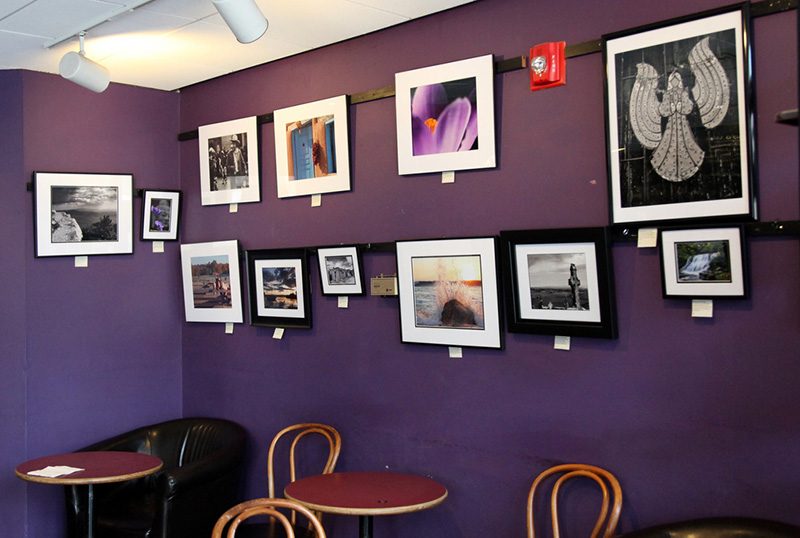
If you ever find yourself in Middletown, don’t miss out on a chance to stop in and order a cup of coffee! Klekolo has been serving Thanksgiving Coffee since the day they opened, and we love having the opportunity to work with Yvette and her awesome team of baristas. Check out some of these photos from recent visitors to Klekolo – the Best Coffee House in Connecticut!



Get a great cup of coffee at the address below:
Klekolo World Coffee
181 Court St
Middletown, CT 06457
(860) 343-9444
Monday • 6:30AM–10PM
Tuesday • 6:30AM–10PM
Wednesday • 6:30AM–10PM
Thursday • 6:30AM–10PM
Friday • 6:30AM–12AM
Saturday • 6:30AM–12AM
Sunday • 7AM–7PM
Check out our other cafes, restaurants and grocery stores on our Thanksgiving Coffee Store Locator page!
Klekolo World Coffee is the Best in Connecticut
read more -
![Solar Eclipse 2017]()
Solar Eclipse 2017
Cities and communities across the line of totality have been preparing for a once in a lifetime experience: a coast to coast total solar eclipse in the United States. From West Coast to East, the line of totality touches Oregon, Idaho, Wyoming, Nebraska, Missouri, Illinois, Kentucky, Tennessee, Georgia and South Carolina. The last time we had a total solar eclipse this viewable from North America was in 1918. It’s been almost a century, and folks have been waiting for this event for a long time. Do you have enough coffee to get you through the two minutes you’ll be in complete darkness? (we suggest a light roast to balance out the event)
(We had a little bit of fun creating a coffee bean eclipse below… enjoy! If it isn’t loading for you, you can view it on YouTube)

Foggy in Fort Bragg
Here along the Mendocino Coast, we’re keeping our fingers crossed for blue skies. We’re dead in the middle of Fog-ust (that’s coastal living for you!), so we’ll get the darkness, likely without that view of the ring around the sun. Below is a shot of a partial solar eclipse (which is what we’ll have here in Fort Bragg), in foggy Austria back in 2011.

Cristaudo’s in Carbondale
We have one account that is exactly on the line of totality, in Southern Illinois. As one of the best spots for viewing (the longest duration and most perfect eclipse), Cristaudo’s Cafe in Carbondale is preparing for a crazy weekend ahead. If you’re traveling that way to view the eclipse, be sure to stop by and grab a cup of coffee! They’ve stocked up on adorable eclipse-themed cookies, and have a great selection of Thanksgiving Coffee to offer.

Good luck out there!
Solar Eclipse 2017
read more -
![Roasters Guild Retreat]()
Roasters Guild Retreat
In the heat of Northern Georgia, the coffee roasting world is coming together for 18th annual Roasters Guild Retreat! We sent our Roastmaster Jacob Long, Roaster Joshua Long and Roastmaster Emeritus Paul Katzeff to the Lake Lanier Islands for a four-day roasting event.
Learn more: www.roastersguild.org

We’ll upload more pictures as the event continues. You can follow along on Instagram at the #RGRetreat hashtag, or on the @RoastersGuild Instagram page!
Roasters Guild Retreat
read more -
![National Honey Bee Day]()
National Honey Bee Day
August 19 is National Honey Bee Day!
Support the bees with Bee Bold Coffee!

Raising Awareness for Honey Bees
What’s the best way to celebrate National Honey Bee Day? Raise awareness for the plight of the bees – and learn more about what you can do to help. Take a moment to read the Friends of the Earth bee action page on protecting our pollinators, and share it on Facebook, Twitter, and other social media channels. This is a great way to raise awareness and inform your friends. Continue to scroll through that page for more information on pesticides, and the way neonicotinoids are hurting our bees.
Here’s an excerpt from the Friends of the Earth website:
Bees and other pollinators are responsible for 1 in 3 bites of food we eat. Without them, grocery stores would run short of some of our most important and nutritious foods. Coffee? You’ll need to cut back. Nuts and berries for breakfast? I don’t think so. A yummy salad? Your bowl will be nearly empty.
Pollinators are in great peril; their populations are declining around the world. Friends of the Earth works to eliminate pollinator-toxic pesticides like neonicotinoids and glyphosate and shift to organic farming systems that are healthier for bees, butterflies, people and the planet.
Thanksgiving Coffee Beekeepers
Did you know that Thanksgiving Coffee Company has it’s own beehive now? Back in June, bees swarmed in our apple orchard, and members of the Bee Bold Mendocino and local Mendocino Coast Beekeeping group helped us guide the swarm into our own beehive. Take a look at the video below!
Join the conversation on social media: Facebook, Twitter, Pinterest, Instagram
Thanksgiving Coffee Company
• Not Just A Cup, But A Just Cup •
National Honey Bee Day
read more -
![Kenya Peaberry: Latest Arrival for August]()
Kenya Peaberry: Latest Arrival for August
Every month, our Roastmaster Jacob Long chooses a coffee in our warehouse to spotlight for the month. Our Latest Arrival is the coffee that has been delivered most recently to the Thanksgiving Coffee Roastery, and you’ll find that these coffees astound every time.
 The latest arrival for August is our Kenya Nyeri Peaberry, and tasting this coffee at its freshest is not something to be missed. This light roast from Africa has a unique mouthfeel with hints of milk chocolate, ripe peach, and caramel. We’re especially fond of this single origin, because it helped solidify our title as 2017 Roaster of the Year, from Roast Magazine. Along with our Ethiopian Yirgacheffe and Paul’s Blend, the Kenya Nyeri Peaberry was judged during a blind tasting alongside a variety of other entrants – and came out on top. This year’s crop continues to perform well, and now that we’ve established this relationship with the Othaya group, we hope to see many more years of great tasting Kenyan Coffee. We had the opportunity to meet with Jim and Phyllis, representing the Othaya Cooperative, at the Global Coffee Expo back in April, and snagged this photo of them with our Roastmaster, Jacob Long.
The latest arrival for August is our Kenya Nyeri Peaberry, and tasting this coffee at its freshest is not something to be missed. This light roast from Africa has a unique mouthfeel with hints of milk chocolate, ripe peach, and caramel. We’re especially fond of this single origin, because it helped solidify our title as 2017 Roaster of the Year, from Roast Magazine. Along with our Ethiopian Yirgacheffe and Paul’s Blend, the Kenya Nyeri Peaberry was judged during a blind tasting alongside a variety of other entrants – and came out on top. This year’s crop continues to perform well, and now that we’ve established this relationship with the Othaya group, we hope to see many more years of great tasting Kenyan Coffee. We had the opportunity to meet with Jim and Phyllis, representing the Othaya Cooperative, at the Global Coffee Expo back in April, and snagged this photo of them with our Roastmaster, Jacob Long.
A week later, we received this note:
Raising Awareness for Honey Bees
What’s the best way to celebrate National Honey Bee Day? Raise awareness for the plight of the bees – and learn more about what you can do to help. Take a moment to read the Friends of the Earth bee action page on protecting our pollinators, and share it on Facebook, Twitter, and other social media channels. This is a great way to raise awareness and inform your friends. Continue to scroll through that page for more information on pesticides, and the way neonicotinoids are hurting our bees.
Here’s an excerpt from the Friends of the Earth website:
"Greetings Jacob.
It was so nice to meet you at SCA and learn that the coffee we produce helped you win Roaster of the Year. I am so glad our Othaya Peaberry performed so well. That is really a tribute to your ability to find the sweet spot of that coffee.
I hope you are just as happy with the coffees that come this year. As I mentioned Royal did a special project with us this year with red ripe cherries. If I recall correctly I gave you a few samples to cup. It will be good to hear what you think of them.
What made this project unique is that Othaya selected their best farmers to participate in the project and they agreed to wait from 10 to 14 days to pick only their best ripe cherries on the same day so they could be processed as a separate outturn (lot). Once the parchment completed the drying process it was immediately placed in grainpro and delivered to their dry mill. After dry milling it was immediately put back into grainpro and delivered to our warehouse and queued for hand picking improvement. The coffee will be hand picked in the next two weeks and shipped. You can expect this coffee to arrive around the end of July.
Best,
Jim"We’re looking forward to many more years of providing you with some of Africa’s best coffee. Order our Kenya Nyeri Peaberry Light Roast today, and try some of this truly fantastic, award-winning Kenyan Coffee now.
Kenya Peaberry: Latest Arrival for August
read more -
![It Takes a Village to Raise a Whale]()
It Takes a Village to Raise a Whale
When the body of an adult killer whale (Orcinus orca) washed ashore in 2015, the community of Fort Bragg was presented with a unique opportunity. In the wake of a tragic death, a project was born that could benefit the town and further our understanding of the sea creatures that live along our shoreline.
Beached orcas are exceptionally rare and their bodies are a treasure trove of valuable scientific information. In a combined effort between the Noyo Center for Marine Science, the Marine Mammal Center in Sausalito, the California Academy of Sciences, Humboldt State University, and California State Parks, scientists and volunteers acted quickly to perform a necropsy and recover valuable tissue samples. Two years later and the Noyo Center’s Orca Project is on track to reconstruct the 26 foot long skeleton this summer for everyone to enjoy.
Over the next four weeks, the rec center/basketball court behind Town Hall has been transformed into a marine mammal articulation workshop, led by master articulators Mike de Roos, Michi Main, and Lee Post from Alaska. People have come from far and wide to participate in this once in a lifetime opportunity, and there is something there for everyone. Young kids attending summer camp are learning about marine mammals and ecosystems, while high schoolers assemble their own porpoise skeleton. Grad students are taking measurements and gathering data, artists are photographing and sketching bones, all the while locals and tourists walk among them, drinking it all in, amazed by all the activity.
It takes a village to raise a whale skeleton; from recovering, transporting, cleaning, and housing the bones, to assembling the skeleton and raising it up for all to see. Everyone has a role to play, including Thanksgiving Coffee, who is keeping everyone working on the project well caffeinated. We are so enthusiastic about this amazing endeavor that we have also created a special Orca Project fundraising coffee to help support the mission of the Noyo Center.

It seems that our whole community has coalesced around whalebones, and Thanksgiving Coffee is no exception. Upon its completion, our small town will host one of the largest and most complete Orca skeletons in the world; something that the whole community can take pride in, because it took the whole community to achieve.
It Takes a Village to Raise a Whale
read more -
![A History in Nepalese Coffee]()
A History in Nepalese Coffee
In 1998, I was in Nepal. I was there because USAID offered me a free trip, provided I completed their mission.
The mission: to assess the coffee world in Nepal, from the farm to the cup. Nepal had some history in coffee production but it was in the distant past. Not much was known about Nepal’s coffee experience in 1998 – so they sent me to find out.
I was set down in a small city called Tenzen. I was housed in a small hotel in the foothills at about 5,000 feet above sea level. From my window I could see five 20,000 foot mountain peaks all lined up, covered in snow, and glowing golden in the late afternoon sun.
Nepalese Coffee Roasters
I soon found out how this trip came about; A local Nepalese coffee store owner who roasted his own coffee (selling to tourists and mountain climbers) had requested coffee information from the U.S. Government.
The question foremost on the mind of that local coffee roaster in Nepal was not how to build an industry that would benefit coffee farmers, but how to market his coffee to tourists. He was interested in helping himself, not growing the benefits of coffee for the many farmers who had coffee trees on their land. These farmers did not drink coffee, and had no ready market to sell into. I immediately re-organized my time and the people I needed to meet. I visited the farms and spoke with the coffee farmers. I soon discovered that my host, the Nepalese coffee roaster, was not liked by the farmers, because he paid very low prices for the coffee he purchased from them.
I got back to my USAID sponsors in the U.S. and told them they had been sold a bill of goods by a self-serving local businessman, and that I could not narrow my study to “How to develop a coffee roasting industry in Nepal” in good conscience. The potential was minimal, and very few would be helped with this mission. Those helped would be the educated middle class, not the poorer coffee farmers, who numbered in the thousands.
Word got back to my host and he was furious. This is not a good thing to happen to someone in a foreign country in the 90’s, where anyone could disappear in some back alley in Kathmandu, or under twenty feet of snow on some nearby mountainside. But I persevered. I decided (since I was already there) to teach the coffee farmers how to prepare coffee cherries for home roasting in a wok. I figured once they knew how to prepare coffee for consumption, they would have the basis for growing coffee for flavor. The idea was that knowledge would open up doors to export coffee, and bring in more money for their families in the future.

Nepalese Coffee Farmers
When I travel to a country to teach coffee to coffee farmers, I always bring green coffee samples from five or six countries to show farmers how the final product looks. It is important to know what green coffee looks like after the seeds are removed from the cherry, perfectly sorted, graded, and then processed for export. I want them to see what they are aiming toward. I also bring a small popcorn popper (110V) to roast the coffee samples if there is electricity available. In this mountain village there was none, so we rested a wok on three round stones over a bamboo wood fire.
This was a great teachable moment. In an open wok, you can see the changes as they come about. We sat around the fire, stirring the beans with a long stick. The heat from a bamboo fire is hot, very hot. As the coffee turned from tan to a dark oily black, I took small portions from the wok and allowed them to cool in a cool metal pie tin. After 15 minutes of wok-stirred coffee beans, we had all seen the changes and we had four separate samples to taste: Light Roast, Medium Roast, Dark and Very Dark (French Roast).

So we began by harvesting five pounds of their local coffee cherries. In the process of harvesting I taught the importance of “Red Ripe.” We de-pulped the cherries by hand (squeezing each cherry until the wet and slimy seeds popped out. Then we set the seeds out to dry on newspaper in the shade. It took five days to get the coffee beans to dry. They start out at about 50% moisture to about 25% moisture, and they need to be at around 11% to begin to roast. The weather was not cooperating, so I finished the drying in a wok over a low flame for a few hours. Then we let the seeds rest overnight.
Now we had Nepal samples and the roasted samples I brought from Mexico, Costa Rica and Nicaragua. Comparison tasting is a good way for novices to get an idea of their own coffee as it might fare in the export market against the quality of other coffees. In addition, we had the four different roast colors which I wanted to use to show them how they could get different flavors from the same beans.




My next week was spent teaching the principles of coffee roasting and coffee tasting . “If you don’t know what you are aiming at, you can’t hit the target,” I told them. So we spent time tasting and identifying flavors.



It should be noted that the Nepalese are tea drinkers, and chai is their drink of choice. So when I was asked how coffee was prepared in other countries, I told them it was a medium for carrying flavors. In the U.S. we used primarily milk and sugar, but in other countries coffee drinkers added other spices. I encouraged them to prepare coffee however they would enjoy it, and that is what they did. Coffee/Chai formulas were the order of the day, for the next week. Every family made their own version of coffee, and they were all different and delightful. Nothing I have tasted since has come close.
I wrote my report for USAID and sent it in (this was the 90’s, pre-email) and left Nepal via Kathmandu to Bangkok, and then to San Francisco. I left behind 200 farmers who had gained knowledge in roasting and tasting, but had no infrastructure to organize anything. My mandate was to assess the situation and my report gave a clear assessment: build the coffee agriculture in Nepal, and let the roasting trade find its own way. Help the farmers was my message.

It has been two decades since my report was sent off to USAID. I believed I had failed to create what the farmers needed, but I was wrong!
Life goes on and you can’t discount the power of knowledge and education.2017: Thanksgiving Coffee and Nepal
On Apr 5, 2017, almost twenty years later, I received this e mail from Mike at HimalayanArabica Nepal Coffee:
Hi Thanksgiving Coffee,
I found your company through Greenpages Org as we are also going through the application process and I wanted to take this opportunity to reach out to you to again.
HimalayanArabica believes in organic and ethical way of doing business and everyone along the supply chain from crop to cup can all benefit from doing business the right way.
Please give our coffee a try and you can get a free sample by simply emailing me your address and a phone number for the DHL packet.
I hope to hear from you soon and thank you for your time.
Kind regards,
Mike
Below is a shot of our Roastmaster Jacob Long on the left, posting with the same sack of Nepal Coffee as Michael Bowen, from HimalayanArabica on the right.

I replied on Tue, Apr 11, 2017
Mike,
This e mail was very nice to receive,
In 2001 I was sent to Nepal by USAID to evaluate the Nepalese Coffee situation.
I was part of a team of two. We were asked to come by a man who wanted to develop the tourist trade for roasted coffee in Nepal. My report stated my opposition to this plan as it would not have created a coffee industry , but only one or two farms to provide him with coffee to roast and to sell in Katmandu. I recommended the development of the cultivation of coffee so that many could benefit.
I am happy to see and know that my vision was clear and that in fact, aid and market forces (and Nepalese common sense) made the right situation happen and now 16 years later someone is offering me coffee from Nepal that I can roast and market.
For starters, who in the US is your importer that will handle the coffee ?
What is the availability and shipping date?
How many sacks are available?
What quality do you have ?
Has the coffee been cupped and scored by Q graders or would you venture a guess as to its quality?
Who is roasting coffee from Nepal now?
Send samples to Thanksgiving Coffee Company:
PO Box 1918
19100 South Harbor Drive
Ft. Bragg, CA 95437Thank you for taking the time to contact me. I am very interested and that is an understatement.
Paul Katzeff
CEO
Mike replied:
Hi Paul,
Thank you so much for your reply, it was very educational and got to understand a little piece of history of coffee here in Nepal. My name is Michael Bowen and I am a Korean-American grew up in Wisconsin. I spent some time in Korea and realized I wanted to do something else and somehow, almost magically, I came to live and work in Nepal and was given this fantastic opportunity to work with a company that has the same vision as I do, which is organic, ethical, sustainable and quality.
Raj, the owner, has been working tirelessly for more than 10 years to develop the farms in order for them to move towards the specialty market. Nothing is all set nor perfect here, but we are moving in the right direction.
Even though I have only come into the scene for a little more than a year, I can see that there is a lot of potential here which you undoubtedly saw 16 years ago.
Regarding your questions:
We do not have a dedicated US importer, at the moment.
There is about 8 tons available for shipment as soon as money is received and another 8-16 tons can be made available of the same quality from a different region after some weeks after the order is made.
We only have AAA specialty quality available for export.
Raj is a Q-grader himself and tastes the every batch that comes in. The samples we are sending out now have been sent out to various other graders from US, Europe and Australia and have scored between 83-86. Raj has scored this lot 85.5 SCAA standard.
There are several ‘roasters’ here in Nepal, but we also do our own roasts. Raj was the first to bring in equipment from abroad, from pulping machines to a roaster from Italy, but now there are several places where roasting is done. Raj, I believe, has the most experience roasting and you can check out our website at the ‘home’ section for testimonials for more reviews of our coffee and you can check out some roasted beans we offer.
We will send out samples this week and I will notify you the tracking number.
Kind regards,
Mike
That’s the story in a nutshell.
Time + Knowledge = Evolution.
We received the samples from Mike at HimalayanArabica, and I was surprised at the flavors and the cup quality. But I was more surprised at how good I felt about what I did twenty years ago in the hills of Nepal. I believed that I had failed to make change happen for those isolated coffee farmers, and that there was no hope for Nepalese Coffee.
Life goes on.
Paul Katzeff
Mendocino, California
A History in Nepalese Coffee
read more
